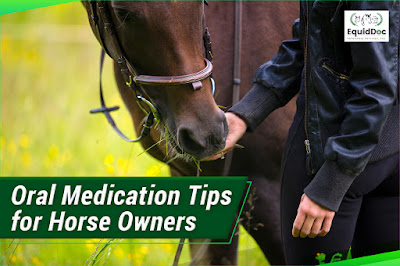Top Five Tricks for Oral Medications for Your Horse

The tricky part after the EquidDoc veterinarians leave is getting the horses to take their medications. There are several ways for it some are adding flavours to the pills and grinding and mixing the pills in their food or dosing Syringe, ie, Powder medications can be combined with a tiny quantity of warm water and drawn up into the dosing syringe. Pill Pockets are another way this is done by carving pockets in the food(ex: carrot, Apples etc) and place the pills inside the pocket. I understand that the process sounds tedious but, EquidDoc will help you with all your questions. Learn More: https://www.equiddocvet.com/top-five-tips-tricks-oral-medications-for-your-horse/
